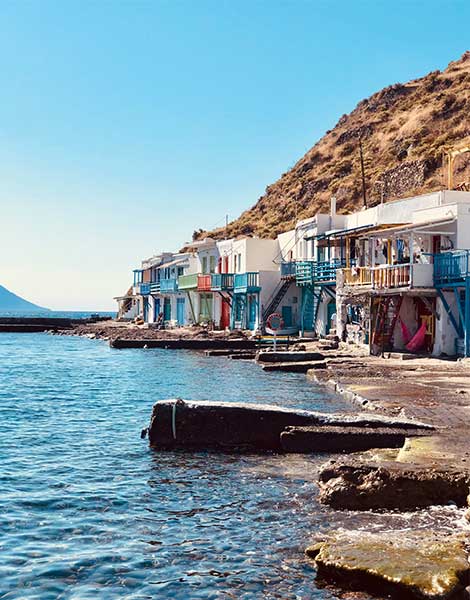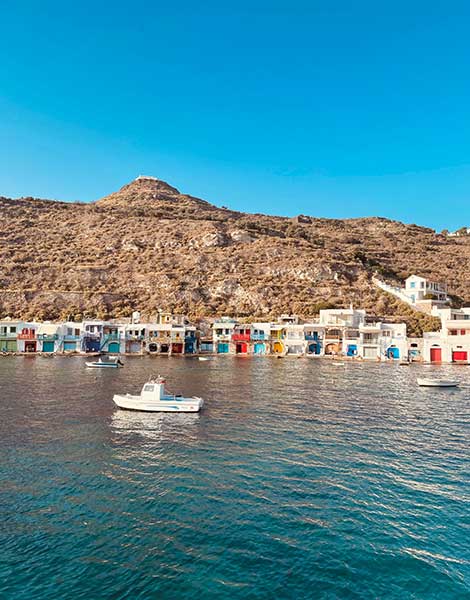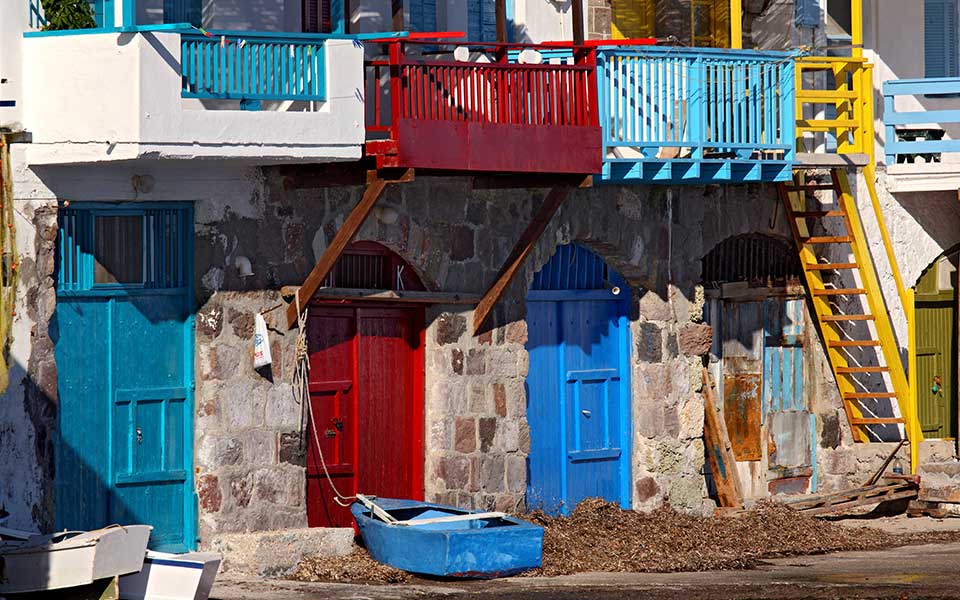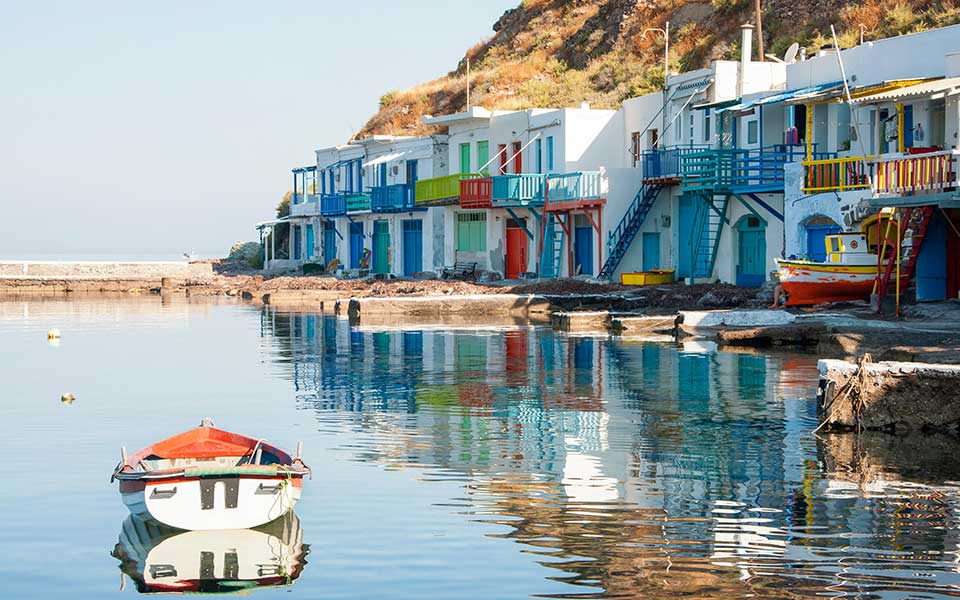The syrmata are single-room structures found on Milos. Small, semi-underground seaside shelters characterized by colorful doors and once used to store boats during the winter, they are among the most iconic images of the island. They exist either as standalone buildings or in groups, usually arranged in a radial layout along the shoreline, following the natural contours of a sheltered bay. They are either fully or partially carved into the earth and are just large enough to store a boat (typically about 6 meters long) during winter. Some had a second floor added to serve as living quarters for the fisherman.
Most of the syrmata are located in the northern and eastern parts of Milos, in places such as Aghios Konstantinos, Alogomandra, Empourios, Kaminia, Mandrakia, Mytakas, Pachaina, Provatas, Schinopi, Fyriplaka and Fyropotamos, as well as in the traditional settlements of Klima, Areti and Fourkovouni. In recent years, many have lost their traditional function as boat storage facilities and are being converted into private residences or tourist accommodations, often with incongruous additions such as pergolas, barbecue areas and large glass doors.
In an effort to halt alterations to these local treasures, the General Secretariat for the Aegean and Island Policy has decided to classify them as protected edifices; an initial group of 52 buildings has already received this status.

© Despina Galani/Unsplash

© Thomas Tsopanakis/Unsplash
“The syrmata are an image closely tied to Milos, a part of the island’s intangible cultural heritage. They are fine examples of local architectural tradition and landmarks of the island,” says Manolis Koutoulakis, General Secretary for the Aegean and Island Policy.“The first attempt to record and protect them was made many years ago but was never completed. We decided to restart the process recently with the help of the Department for Preserved Buildings and Natural Beauty, due to the growing pressure to turn them into accommodations – something that leads to the distortion of these structures and the loss of their character. In total, there are 14 closely-knit groups of syrmata on Milos (we are not focusing on individual ones), and we’re starting with Mandrakia, one of the best-preserved clusters.”
The decision by the General Secretariat calls for requiring that designated buildings be preserved in their original form (excluding later additions), and that any surrounding features such as pathways, courtyards and stairways be protected as well. Once this designation has been made, any additions to the original layout of the syrmata must be removed, and its original appearance restored.
In addition, new interventions – such as extensions beyond their existing footprint, including new decks or expansions toward the sea – will not be permitted, and nor will modifications to the surrounding area.

© Shutterstock
“No” to Airbnb
The most significant (and, unsurprisingly, least well-received) aspect is the introduction of strict limits on how the structures can be used. According to the proposal, aside from their original use as boat shelters – and private residential use where it already existed – only small local product shops, small cultural venues (e.g., exhibition areas, folk museums or art workshops), and local association offices will be permitted.
“To be used as accommodations, the syrmata would need to meet the requirements for an EOT (Greek National Tourism Organization) license, which is impossible due to their structure,” Koutoulakis notes.
It should be noted that the initiative does not address ownership status; indeed, the decision specifically refers to the syrmata as being of “unknown ownership,” as these are unauthorized constructions located on the seashore.
With information from kathimerini.gr












